Summer squash does everything but plant itself. If you seek a vegetable that is easy to grow, flavorful, and nutritious, look no further. You can help summer squash thrive by planting it with companion plants.
If you have planted zucchini, pattypan, longneck, or yellow crookneck squash, you know what vigorous growers and prolific producers summer squash can be. Summer squash (Cucurbita pepo) is ready for harvest in as little as seven weeks from planting.
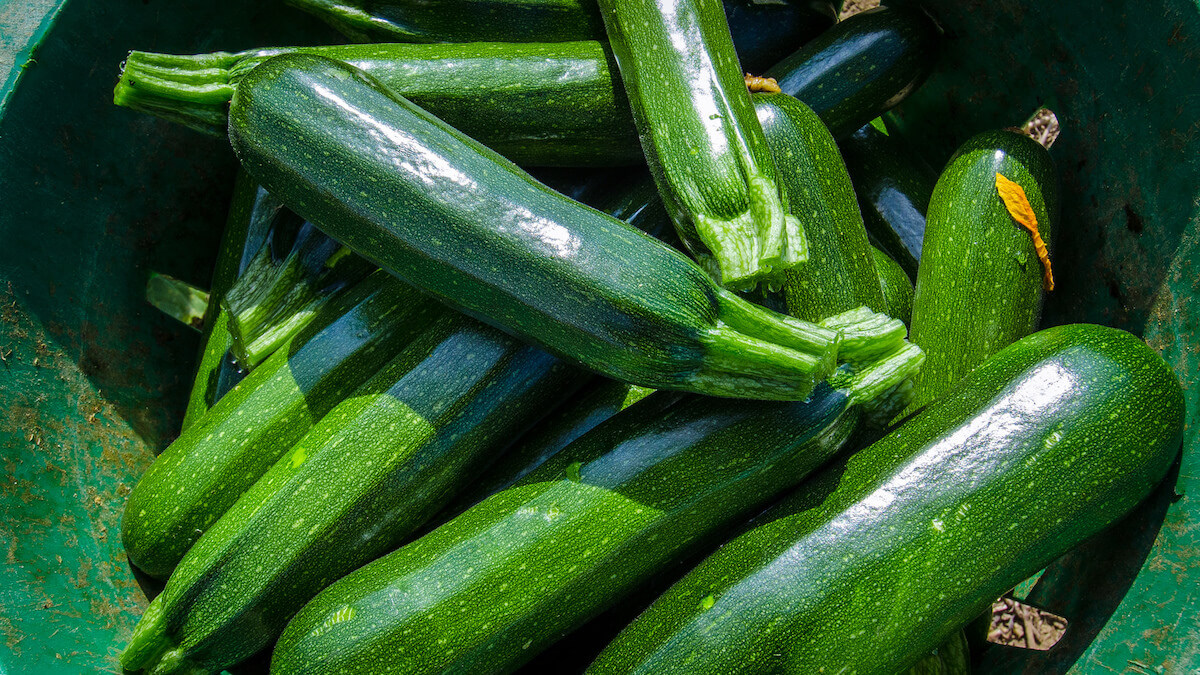
Squash, one of the oldest known cultivated crops, comes in both summer and winter varieties. Both are cultivated during the summer months.
However, summer squash is harvested in mid-summer while winter squash varieties are harvested as a fall crop. All of the many varieties of squash are excellent sources of potassium, phosphorous, calcium, Vitamin A, and Vitamin C.
Good Neighbors For Squash
Experienced gardeners report that the key to successfully growing summer squash is to provide them with “good neighbors”: companion plants that repel unwanted insect pests that tend to gravitate to squash blossoms.
Companion plants are simply any plant that is beneficial to another when planted near each other. Companion plants attract pollinators and beneficial insects to the garden. Companion plants also act as “good neighbors” by adding nutrients to the soil and emitting a scent that confuses predatory insects in search of host plants.
“Good neighbors” plants for squash include radishes, corn, peas, beans, pumpkin, marigolds, and nasturtiums.
Corn, squash and cucumbers, and peas or beans planted together is a tradition established by Native Americans, who planted these three crops together in a raised mound. The practice, known as the Three Sisters, was originally intended to provide a bountiful crop of food from a single spot of fertile soil, as each crop is compatible with the other two.
Corn was always planted first so that the seedling had a chance to become established before the beans and peas so that these fast-growing vegetables would not overgrow the corn crop. The corn stalks would then act as growing support for the vining beans and peas.
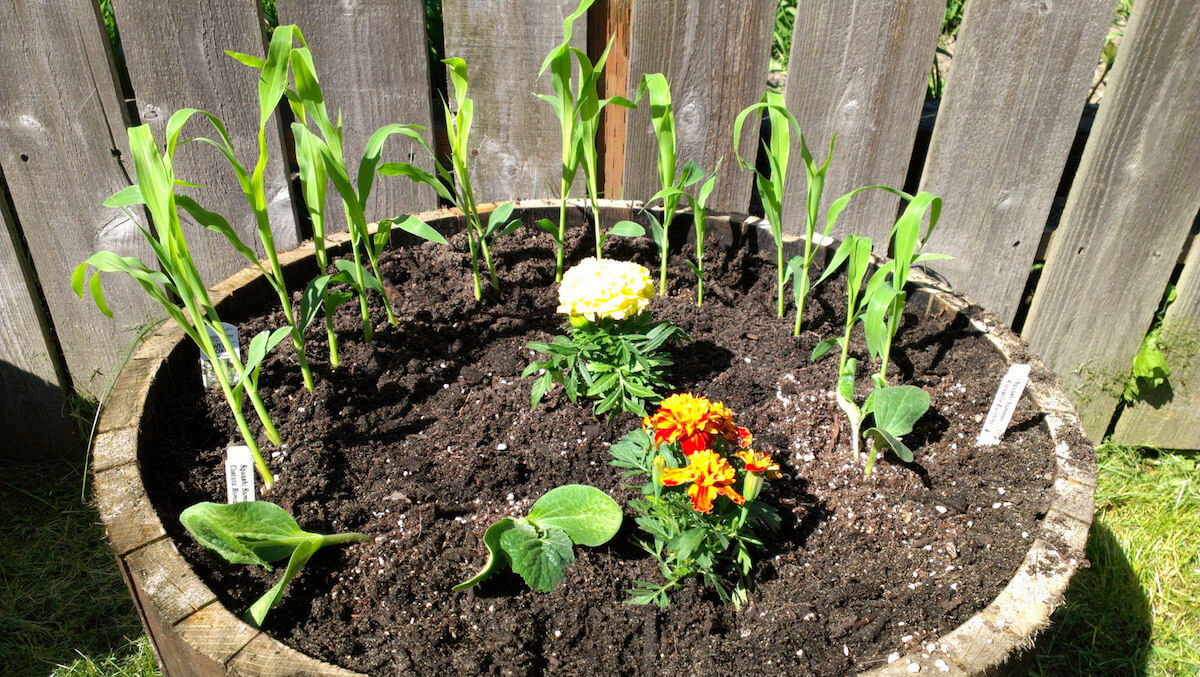
When planted together, the spiky, hairy squash vines make it difficult for invading insects to reach the corn, peas, and beans. Squash, in turn, benefits from the shade provided by the cornstalks. Squash plants also provide dense soil coverage that helps deter weeds from popping up around the corn, peas, and beans.
Marigolds add color to the garden plot while helping to repel beetles and nematodes.
Borage is also effective in deterring insect pests and improves flavor and growth when planted in close proximity to summer squash.
Nasturtiums add color to the garden border and both the leaves and flowers are edible. Add both nasturtium flowers and leaves to salads for a spicy accent or use the flowers as a plate garnish. Nasturtiums thrive in a full-sun location, but will also grow well in partial shade. Nasturtiums are especially effective in repelling aphids, squash bugs, and beetles and enhance the flavor of summer squash and cucumbers.
Nasturtiums and marigolds also attract bees. Summer squash develops both male and female flowers. To develop fruit, pollen must be transferred from the male flowers to the female flowers. Summer squash flowers are typically pollinated by bees and are dependent on companion plants that encourage bees to visit the garden.
Radishes help deter squash bugs. Crisp, white, and spicy icicle radishes are the most effective in repelling a diverse array of unwanted insects that feast on summer squash.
Summer Squash: Berry Or Vegetable?
It is of interest to note that summer squash is not a vegetable but rather a pepo – a type of hard-shelled berry. No matter if it is a berry or vegetable, summer squash is full of essential nutrients and fiber.
Summer squash can be eaten raw, cooked, or shredded. You can also grate it into baked goods. Squash is delicious breaded, baked, fried, or as a flavor-enhancing ingredient in soups, salads, and stews.
Squash blossoms are also edible. Use them as a garnish in salads, or dipped tempura batter and fried.
Types Of Summer Squash
From short and stubby, to long and skinny, there are hundreds of different varieties of summer squash. Coloration varies from deep dark green to bright sunshine yellow, with surface textures ranging from smooth to ridged or lumpy.
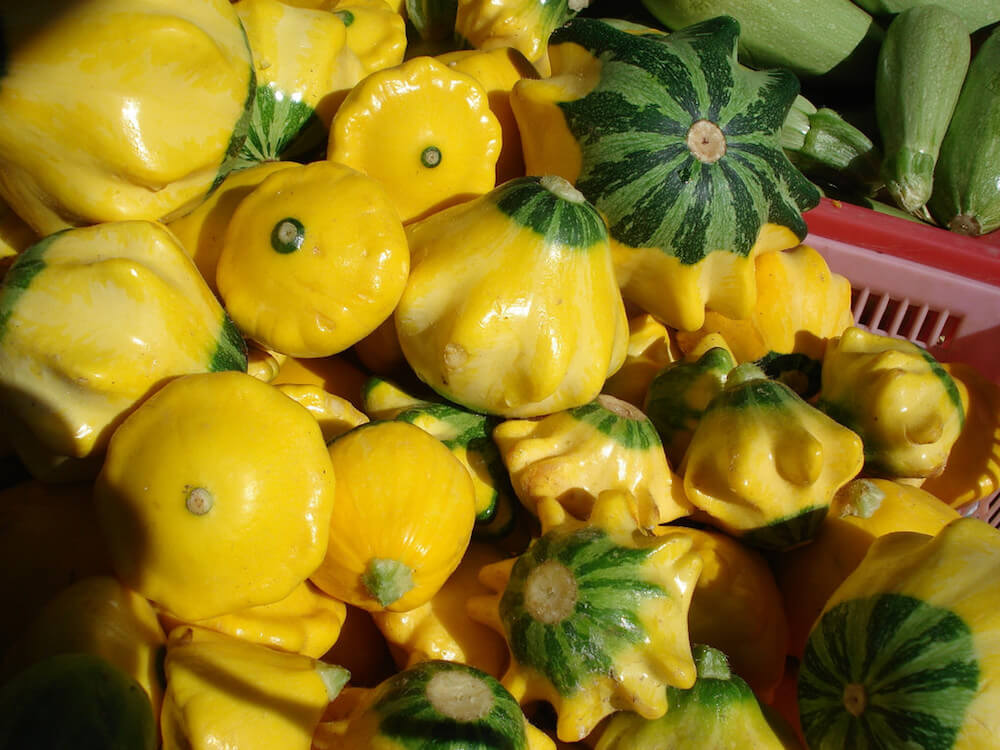
I advise planting one squash plant for each person in the household. If you plant more, you will be up to your eyeballs in squash.
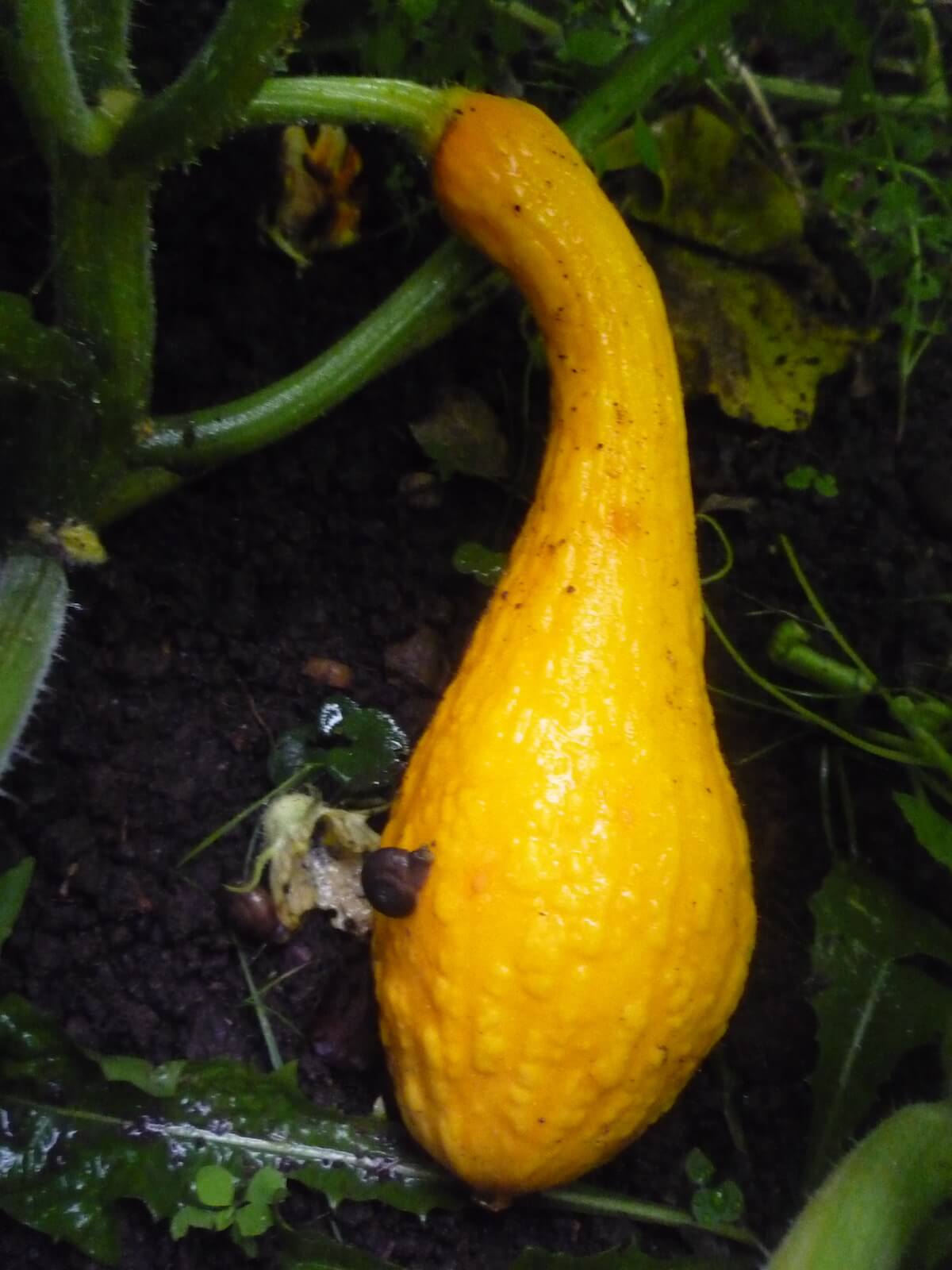
Even if space is limited, urban homesteaders can grow summer squash in containers on a balcony, deck, or patio.
Several varieties form lengthy, rambling vines, while other varieties are bush-type plants that fit comfortably into a small garden plot or in planters on the patio.
Bush varieties of summer squash do exceptionally well in a large pot or five-gallon container with good drainage. Each pot will accommodate two to three summer squash plants, and with plenty of sunshine and consistent moisture, the yield can be phenomenal. Similar to other garden vine crops, summer squash thrives and produces the most abundant of fruit in warm weather.
Cultivating Summer Squash
Summer squash is easy to grow if you keep in mind the plant’s essential requirements of full sun, fertile soil, warm temperatures, and consistent moisture. Summer squash does well in almost any type of well-drained soil enhanced with plenty of organic compost.
I suggest loosening the soil and removing rocks, roots, and debris, then mixing in a generous amount of well-aged herbivore (e.g. cow, sheep, goat, horse, llama) manure.
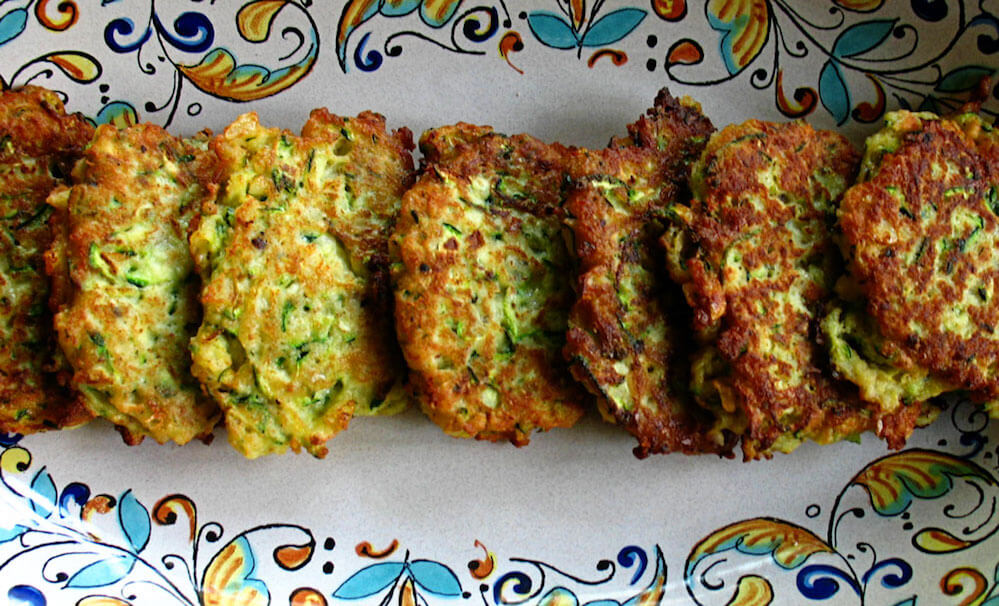
Best Soil For Summer Squash
Summer squash does best in soil with a pH of 6.0-6.7. The pH of soil affects the types and amount of nutrients available for plants to absorb through their roots. A low pH indicates more acidic soil. A higher number indicates a more alkaline soil.
To determine the pH of your garden soil, take several random samples. Place soil samples in a sealable plastic bag and take the soil to your local county extension office for testing.
Do-it-yourself pH testing kits are also available for purchase online or at local home and garden stores. If your soil pH is low, you can increase the pH by adding wood ash or lime.
How To Plant Summer Squash
Plant summer squash in a mounded hill, planting three seeds to a hill. Position mounds about three feet apart to allow plenty of space for vining.
If space in the garden is limited, plant only the bush varieties of summer squash. It is best to plant seeds directly in the garden after all danger of frost has passed as summer squash has a fragile root system and does not do well when transplanted.
Plant seeds one inch deep. Water well: squash plants require a minimum of one inch of water per week.
If you have an urban lot or rural field overrun with weeds, cultivating summer squash is one way to smoother weeds and clean up the land. For both the rural and urban homesteader, summer squash is an easy to grow, marketable crop.
Squash Storage Tips
When freezing summer squash for winter consumption, just wash and cut into quarter-inch thick slices. Dip slices in your favorite egg batter, roll in breadcrumbs, and place on a cookie sheet. Place the cookie sheet in the freezer until the squash is frozen, then package breaded squash slices in meal-sized portions and return to the freezer.
Lemon Coconut Yellow Squash Bread
Ingredients
- Two cups white sugar
- Three large eggs, beaten
- Two teaspoons of vanilla extract
- One cup of coconut oil (vegetable oil may be substituted)
- Two teaspoons of ground cinnamon
- One teaspoon of ground nutmeg
- One teaspoon of ground cardamom
- Three cups of white, all-purpose flour
- One cup shredded coconut
- Two cups shredded yellow summer squash
- Three teaspoons of baking powder
- Two tablespoons of lemon juice
- Zest of one fresh lemon
Directions
- Preheat oven to 325 degrees Fahrenheit. Grease a 9” by 23” baking dish or two small loaf pans.
- In a large mixing bowl, cream together sugar, eggs, coconut oil, vanilla, and spices.
- Gradually add baking powder and flour, mixing well.
- Fold in shredded coconut, lemon juice, lemon zest, and squash.
- Transfer mixture to greased baking dish or loaf pans.
- Bake for 45 to 55 minutes in a pre-heated oven or until a knife inserted in the center of the loaf comes out clean.
References
University of Illinois – Watch Your Garden Grow: Summer Squash
University of Minnesota – Growing zucchini and summer squash in Minnesota home gardens
The United States Environmental Protection Agency – Reusing Potentially Contaminated Landscapes: Growing Gardens in Urban Soils
Data Corp – Growing Fresh Market Pumpkins, Squash, and Gourds


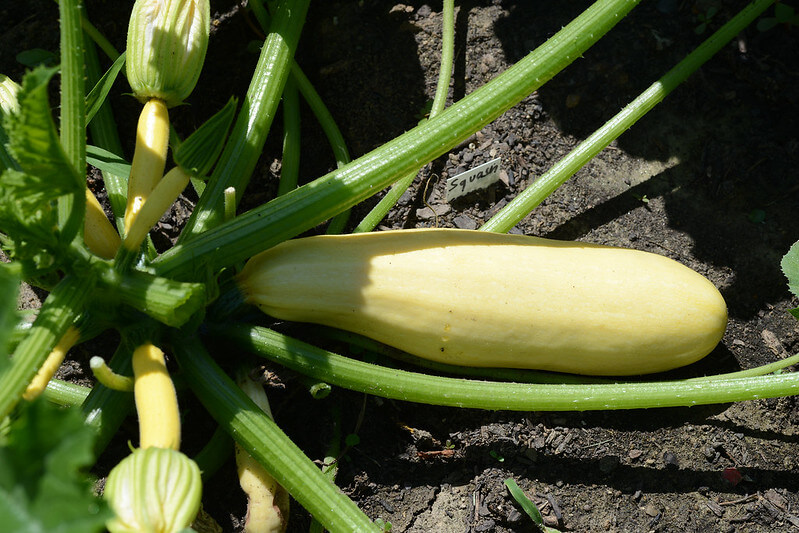








































how close can one squash plant be NEXT TO ANOTHER SQUASH PLANT WITHOUT INTERFERING WITH ONE ANOTHERS growth???? Please let me know.
I saw someone’s garden from the highway they looked maybe 10 ft apart? Could have been melons though. I bet the info is available from your county extension office though, and/or many other gardening sites.
When I was in a hurry the other day planting, I just took 2-1/2 long paces between plants. Seemed right to me. If it turns out to be too long I can put in a companion plant in between. Or maybe put something tall in between that’s seasonally appropriate that the squash could climb on.
So that’s my somewhat informed opinion. For expert info, County extension offices and sites and literature are amazing resources. Plus you have already paid for all these through your tax dollars.
If you plant them with a good amount of mixed compost, the limiting factor will Probably be water. With a regular watering from a drip system or a line of Olas, (homemade from flower pots), plant them as close together as you like in a row. Rows will need to be 4-10 feet apart for winter squash. There the limiting factor is sunshine, which depends on your climate. I planted bush squash 3 inches apart this year next to a trellis. ( The plants were labeled “Muncher Cucumbers”, my bad!) I thinned out a couple that weren’t doing well, but the rest are vigorous and setting fruit. I’m using onion plants for my smelly squash disguisers, and have not seen any powdery mildew, (or much rain for that matter).